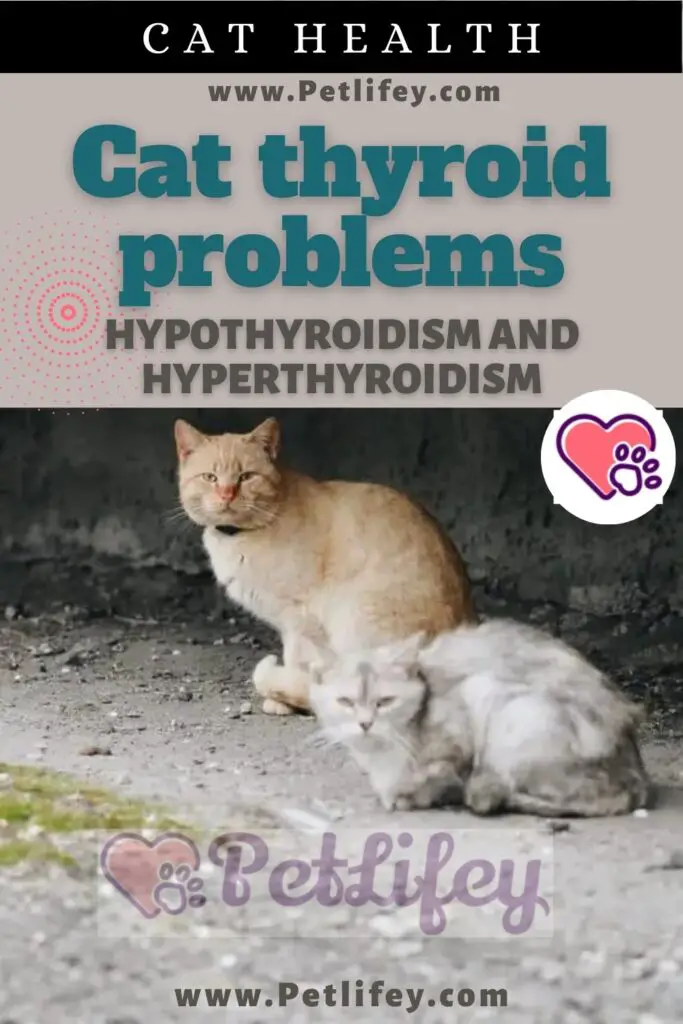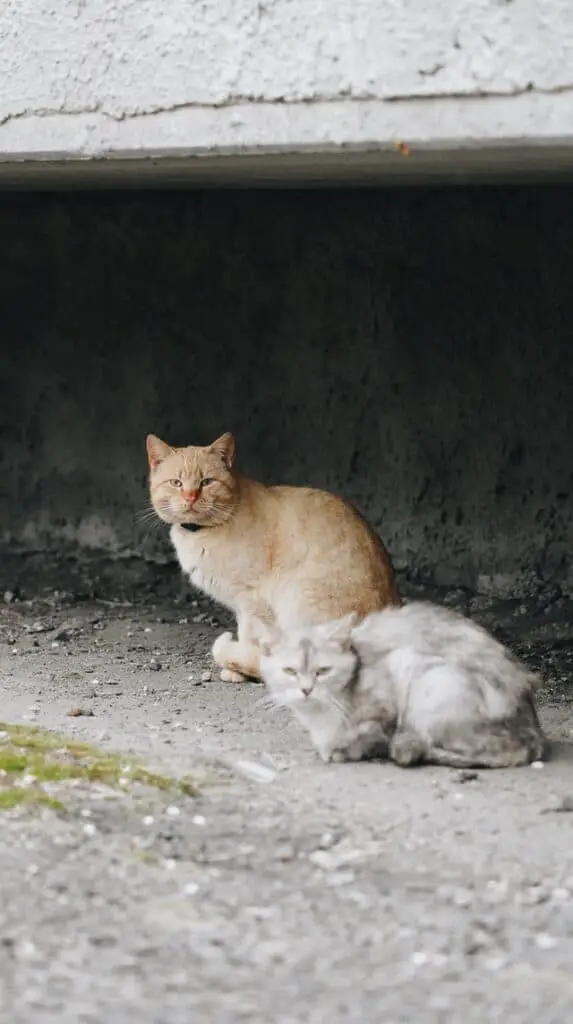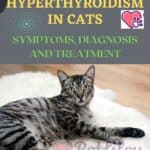
Cats become sensitive to the development of thyroid gland dysfunction as they age. When there is a problem with the cat’s thyroid gland, which may or may not work too much, the symptoms that appear are different. The two main disorders affecting thyroid activity are hyperthyroidism and hypothyroidism in cats.
In the following paragraphs we will understand exactly what we are talking about, regarding these thyroid problems, which can affect us but also our beloved cats.
Hypothyroidism: Cat’s thyroid problems
Hypothyroidism is a common hormonal disorder in cats. Thyroid hormones are produced by the thyroid glands (also called “thyroid”), located in the neck, on both sides of the trachea. These hormones, which are active liquid substances, play a fundamental role in the regulation of metabolism (hair growth, body temperature regulation, heart function, etc.) and in the normal functioning of the body.
During hypothyroidism, there is a deficit in the production of hormones, which means that they are no longer produced in sufficient quantities. This phenomenon follows a destruction of the thyroid glands or causes their malfunction .
Symptoms of hypothyroidism in cats
Your cat does not produce enough thyroid hormones and among the most common symptoms related to this lack of hormones, we can note:
- A lack of dynamism, fatigue, a decrease in activities
- Behavioral disturbances
- Cat weight gain, face edema
- A loss of cat hair, a deterioration in the quality of the hair
The lack of thyroid hormones is expressed differently in each animal. It may be that in some specimens not all the symptoms described are observed, but only some.
Which breeds are most affected by cat thyroid problems?
Virtually all cat breeds, including mixed-breed cats, can have hypothyroidism. Hypothyroidism is often diagnosed between the ages of 2 and 6. Males and females are equally affected.
Diagnosis
Primary hypothyroidism, the most common in cats, is associated with the destruction of the thyroid gland, which causes a deficiency of the thyroid hormone. Cats affected by primary hypothyroidism are over 95% of cases. Primary hypothyroidism splits into lymphocytic thyroiditis where the body produces antibodies against thyroid cells, which are destroyed.
But the signs of hypothyroidism only appear when most of the glands are destroyed. This process proceeds slowly (1 to 3 years). In other cases, the thyroid cells are replaced by fat cells. We are talking about idiopathic atrophy but the cause of this phenomenon is not known. Whatever symptoms have alerted you, it is essential to see your vet to examine cat thyroid disease.
Depending on the clinical exam and the information that can be provided, the vet will suggest several blood tests to confirm the diagnosis. It is sometimes difficult to diagnose hyperthyroidism when the symptoms are not very pronounced. Your vet may repeat some tests to be able to tailor the most appropriate treatment to your cat.
Treatment of hypothyroidism
Treatment of hypothyroidism is based on the use of a synthetic thyroid replacement hormone. In most cases it is a treatment for life, but it is quite simple and not very binding. It brings about a fairly quick improvement in the condition of your four-legged friend, even if the coat will probably take a few weeks to regain its original appearance.
Approximately 4 weeks after starting treatment, a follow-up visit can be performed. On this occasion, the vet will suggest blood monitoring to ensure hormone levels are within normal limits again. It is important to inform the veterinarian of any new symptoms or illnesses while the cat is being treated. Any change is an indication of re-evaluation of the animal.
- What is the prognosis for cat hypothyroidism?
Prognosis is excellent when hypothyroid cats stabilize through the use of replacement thyroid hormones. Life expectancy is therefore the same as for healthy animals.
Hyperthyroidism: Cat’s Thyroid Problems

Hyperthyroidism is quite common in older cats. Symptoms are highly variable and there are a number of treatments available.
Your cat can live with the presence of hyperthyroidism, from the moment it receives proper treatment. He can stay healthy for many years after the disease stabilizes. Hyperthyroidism is a hormonal disorder, a thyroid overproduction. The thyroid is a gland located on each side of the trachea in the neck.
It produces two hormones that are involved in the overall metabolism and regulation of the cat’s body temperature. But it can start producing too much hormone by speeding up your metabolism. Hyperthyroidism is usually caused by lumps on the gland.
Symptoms of cat hyperthyroidism
The symptoms of hyperthyroidism are highly variable. In most cases, your cat will be able to lose weight while still finding herself eating more and more. Other symptoms may also include vomiting, diarrhea, increased thirst of the cat. In addition, your cat’s behavior can change: he will become more active or nervous. Often the hair becomes dull. When the disease is unfortunately in a very advanced stage, a higher heart rate will be noticed in the cat.
Diagnosis
To make the diagnosis of hyperthyroidism, the vet will carry out a thorough examination. Normally, you cannot feel the thyroid gland with your fingers. In case of hyperthyroidism, this gland will grow and you can feel it by touch. This palpation is complemented by a blood test. Complementary examinations allow you to detect possible complications.
Treatment of feline hyperthyroidism
There are four treatments for hyperthyroidism.
- Medical treatment
Medical treatment is the most followed. It consists of giving the cat an antihypertyroid, which will help block the synthesis of hormones. This treatment is the simplest. However, your cat will need to do this for the duration of her life. Side effects can include cat vomiting, lethargy and, in some cases, itching, but adjusting treatment can set it all together.
- Surgical treatment
Surgery allows for complete healing if the diseased tissue is completely removed. But it is a very delicate operation that is still not practiced. It is preferable to operate when the nodules present on the thyroid gland are affected by cancer.
- Radioactive iodine treatment
It involves irradiation of the thyroid gland with radioactive iodine. It is a totally effective and definitive practice, but very few veterinary clinics are equipped with the necessary equipment. In addition, the cat must remain in isolation for at least fifteen days.
- Suitable power supply
A new feline diet will be very low in iodine. It is a very effective solution with no side effects, but only for cats who never go out, because they don’t have to eat anything else.






